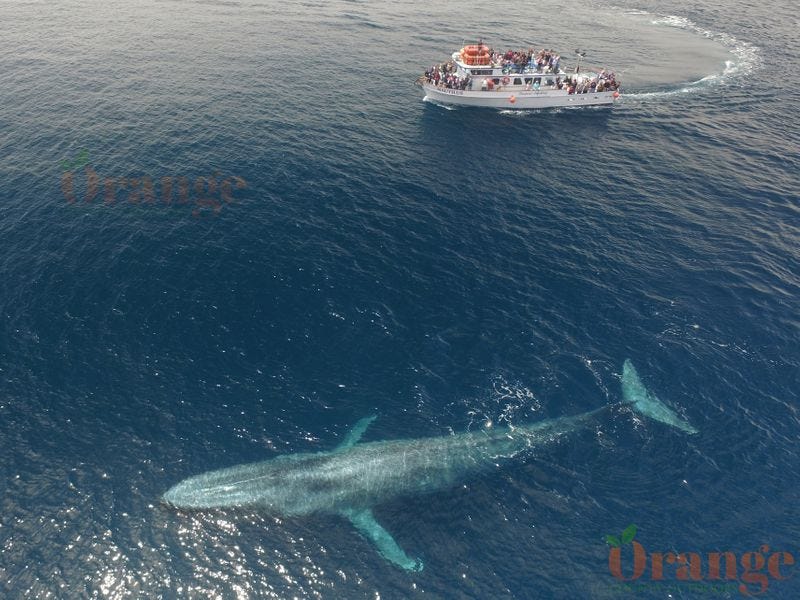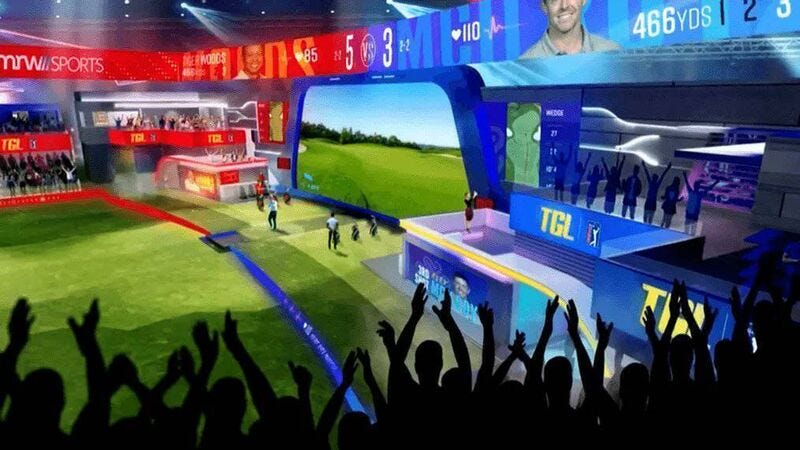TGL By The Numbers: 13 Eye-Opening Figures As Simulation Golf Goes Primetime
TGL, one of the biggest innovations in golf in years, begins Tuesday night, but what do we know about the numbers behind ESPN's new primetime offering?
One of the biggest innovations in golf in YEARS begins Tuesday night with the match between New York Golf Club and The Bay Golf Club in the TGL, a.k.a. The Tomorrow Golf League, presented by the Tiger-Rory venture Tmrw Sports.
But what do we know about the TGL numbers? Let’s dive in.
Less than three years on from the arrival of LIV Golf which shook up the professional game all over the world — an initiative that had many detractors complaining that it was circus golf, with made-up competition, unnecessary technological gimmickry and ludicrous-sounding teams — perhaps golf’s biggest ever circus, complete with brand-new competition formats, massive technology investment/gimmickry and brand new teams (ludicrous-sounding or not? You decide!) starts Tuesday night with the one-year-overdue start of the TGL.
ESPN will screen the first match in the not-priceless-but-pricey primetime slot of 9pm ET, with former US Open champ Wyndham Clark teaming up with his old Ryder Cup foes Shane Lowry and Ludvig Aberg for (--checks notes--) The Bay Golf Club against Xander Schauffele, Matt Fitzpatrick and Rickie Fowler, representing New York Golf Club.
Conspicuous by their absence, from shot-playing at least, will be Tiger Woods and Rory McIlroy, the two driving forces behind the venture, which has been seen in many ways as a direct response to LIV’s major shake-up of the pro game in 2022.
When McIlroy was interviewed on ESPN by Scott Van Pelt at half-time in Saturday’s NFL clash between the Baltimore Ravens and Cleveland Browns, there were unmistakable echoes of LIV’s slogan of “Golf But Louder” in the Northern Irishman’s description of what we were about to witness.
“Golf, but reimagined”.
Golf may be a game that’s 500 years old (or more) and one where tradition, heritage and conservation — perhaps even conservatism — has always created the most value and the highest esteem, but it’s fair to say the game has never been louder or more reimagined than in this fast-moving 2020s battle for relevance in the minds of the dopamine-chasing, TikTok-addled, attention-deprived masses for whom 15-hour Major Championship days must now seem at best quaint and at worst like some form of medieval torture.
But what about the numbers?
What do we know about the dollar amounts and data points that add up to what could become one of the game’s biggest ever innovations — this is surely the hope of McIlroy, Tiger and Mike McCarley, the former Golf Channel President who became CEO of Tmrw Sports in 2022, as well as a long list of big-name team owners and investors which includes Justin Timberlake, Josh Allen, Serena and Venus Williams, the Fenway Sports Group and Steve Cohen, the owner of the New York Mets.
Either that, or — there being no room anymore for lukewarm outcomes in our social media-sapped world — one of sport’s most high-profile flops.
As with all matters that get the high-powered boardroom treatment and squads of legal teams milling together across miles of corridors, precise and confirmed figures are few and far between, and those that are available are probably closer to carefully-plotted marketing messaging than meaningful metrics.
But still, numbers are everywhere, and even if we can’t be sure whether they’re written in stone or in sand, let’s go through a few of them.
13 Numbers That Tell the TGL Story (Sort of)
$50 million
The reported construction costs of the SoFi Center on the campus of Palm Beach State College in Palm Beach Gardens.
$11 million
The original venue budget before redesign and delays caused by significant storm damage in late 2023 saw costs multiply.
$21 million
The total prize pool on offer during the inaugural season, with $9 million split evenly going to the winning team of four — $2.25 million a man for those like me who need it spelled out.
250,000
The total square footage of the SoFi Center. To put this in perspective, the Las Vegas Sphere comes in at 875,000 and Radio City Music Hall in New York is approximately 500,000 square feet. So far from the biggest indoor arena in the land, but nothing to sniff at, either. The purpose-built venue is 75 feet high and has a seating capacity of between 1500 and 2000, depending on where you source your info.
3,392
The square footage of the FullSwing simulator screen which will be the epicenter of the game-play. Measuring 64 feet x 53, the screen is said to be roughly 24 times the size of a standard simulator. The whole thing was enough to have Billy Horschel (eight-time winner on the PGA TOUR and Atlanta Drive Golf Club stalwart) repeating “Holy Smokes!” over and over again when he visited for a dry run recently.
22,475
Sticking with square footage for a moment, this is the total size of the green complex, which comes complete with “turntable technology” — the whole thing can rotate 360 degrees, making it perfect for TV viewing.
600
The number of “motorized actuators” embedded beneath the synthetic grass surface of the green complex. The actuators — the kind of thing used in precision assembly, microscopic laser systems and quantum optics experiments — will allow for extremely precise positioning, providing a bewildering possibility of variations of slopes, contours and undulations to keep the pros on their toes and you and I gazing helplessly at our TV screens.
800,000
The weight in pounds of the green complex, including turntable, motorized actuators and everything else. If you need a picture, that’s approximately the weight of three blue whales.

$160
The starting price for standard tickets on the TGLgolf.com/tickets portal, although there have been reports that the organizers have been shelling out up to $250 a pop on “seat fillers”, hired hands to come in and clap and holler in all the right places.
24
The number of players in the league, spread across six teams, with one player sitting out each match. The teams play five matches each in the regular season portion of the league, which comes to an end on Tuesday, March 4. (Most evenings will include just one match-up, but there will be a bumper three-match showdown on Presidents' Day on February 17.)
15
The number of holes that will be played during each two-hour match. And the game-play innovation doesn’t stop there. The first 9 will be played on a three-way alternate shot basis, with the final six a straight up head-to-head between individual players on each team.
40 seconds
The shot clock, which will keep all the players — who will be mic’ed up for greater entertainment — on task. Although there will be time-outs to give some greater leeway for team collabs in big moments.
$85 million
An estimated potential value of the annual broadcast and media rights of TGL to Tmrw Sports (unlike the YouTube-streaming LIV, deals have been struck to ensure TGL is available on paid linear and streaming services everywhere from the UK to the Netherlands to the Nordics to Australia, Japan and Korea). However, this is seen to be the very upper end of the possible valuation for year 1, given that the entire thing is unproven and may yet look like a weird sort of grand golf opry. In addition, that Primetime Eastern might be great for ad spot valuations in the US but is not at all for most audiences around the world, including the UK and Europe, where most games will take place in the wee small hours of the morning.
In addition, the tournament’s operational costs — everything from technology licensing and support to event-day support staff, senior executive salaries to insurance, marketing and promotion to player travel and accommodation — are likely to run into the tens of millions of dollars, but as is the way with these things, nothing has been revealed publicly of the operational budgets.
So there you have it. TGL by the numbers. Or a few that we’ve been told or can guesstimate.
What do you think? Will you be watching? Is all this technological innovation great for golf, or are you a plus-fours-on-the-links sorta guy?
Let us know in the comments.
Till next time.
Shane






